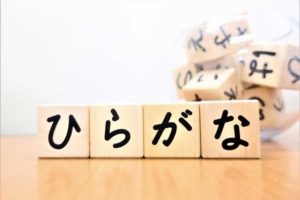
The concept of "inside: Uchi" and "outside: Soto" Part 1
"ウチ "と "ソト "の概念 その1

Hiragana
Japanese has no “tone” at all. ひらがな 日本語を学ぶための最初のステップは、アルファベットを学ぶことです。または、少なくとも、その言語に存在する音を学ぶために。他の多くのアジア言語のように、日本語には「声調」はまったくありません。アルファベットには、後で説明する2つの例外しかありません。日本語のアルファベットには文字は含まれていませんが、代わりに文字が含まれており、技術的にはアルファベットではなく文字セットです。下の表の文字はひらがなと呼ばれています。ひらがなは、日本語の主要なアルファベットまたは文字セットです。日本語には、他に2つの文字セットがあります。後で説明する漢字(漢字)と、主に外国語に使用される別のアルファベット/文字セットのカタカナです。カタカナについてはレッスン2で説明します。ひらがなのすべてのキャラクターを覚えるまで、先に進むのを待たないでください。他のレッスンを続けながら、それらを学びましょう。 日本語には5つの母音があります。 (a)、「ahh」と発音、(i)、「eat」では「e」のように発音、(u)、「soon」では「oo」のように発音、(e)、「elk」では「e」のように発音、および(o)、「oh」と発音します。 (n)を除いて、すべてのひらがな文字はこれらの母音の1つで終わります。英語に似ていない唯一の「子音」は日本語の「r」です。 「d」、「r」、「l」の組み合わせのように少し「巻かれ」ています。 HH JapaNeedsYour tutor. Your

Top 5 Fast Food Restaurants in Japan
Have you ever used Japanese fast food restaurants? In Japan, the food culture of “fast food” is fairly well established,

Rules of “Janken” in Japan
In Japan, there is a game called “Janken” in which the winner is decided. Is there such a game in

Average height of Japanese women and men
When you live in Japan for a few years for work or other reasons, it is basically necessary to understand





